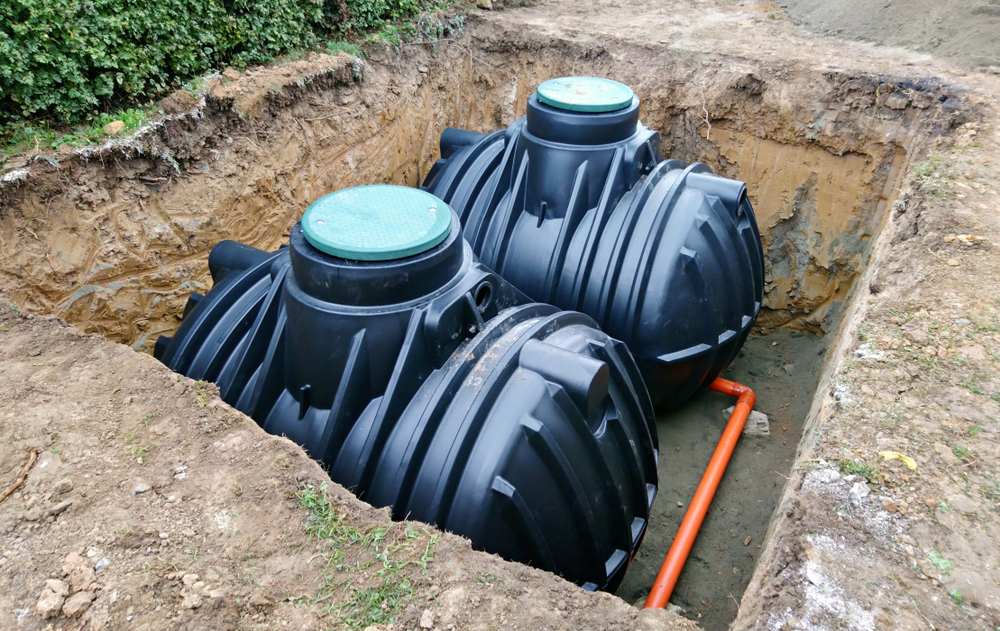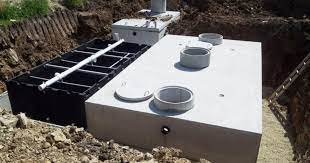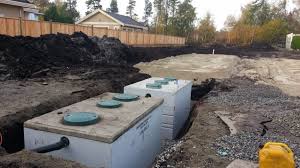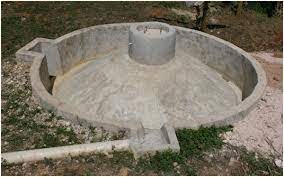Cost Of Installing A Septic Tank In Kenya
The average cost of installing a septic tank in Kenya is Sh.100,000-Sh.500,000. The cost of installing or constructing a septic tank will be determined by its size, material, and design, among other factors, as we will detail later. The cost of installing a plastic septic tank is Sh.100,000-Sh.150,000 on average. A plastic septic tank is the most affordable type of septic tank. Different types of materials for septic tanks cost differently. We will show you a list of all types of septic tanks and how much they cost.
The cost of installing a septic tank will be more favourable if you make a workable plan per your budget. A good plan will prepare ahead of construction on what you need. A well-laid-out plan will also help you know whether your capital is enough and whether you are ready to install a septic tank. A septic tank lasts 10-40 years when well-constructed and well-maintained.
Aside from the septic tank, there are other requirements for installing a septic tank. We will take you through all these requirements for building septic tanks and what they cost. It is important to know these requirements before we go any further.
Requirements For Installing A Septic Tank In Kenya
1. Professional contractors
The cost of hiring contractors in Kenya is Sh.35,000-Sh.80,000 per square meter on average. Therefore, the size of a septic tank will determine the labour cost. The cost of hiring contractors is higher in the urban centre compared to small towns and rural areas. The cost of labour increases when the ground you’re building on is hard to dig through. For example, digging through the ground with huge stones will take more energy and time.
2. Building material
You need specific building materials to steady the tank on the ground to install a septic tank. A pipe also runs waste from the house to the septic tank. Below is a table of the necessary building materials used to install a septic tank and their cost.
Septic Tank Building Materials & Costs
| Building material | Cost |
| Cement | Sh.500-Sh.700 per bag |
| Bricks | Sh.10-Sh.15 per piece |
| Vent pipes | Sh.600-Sh.700 per inch |
| PVC pipe | Sh.1,600-Sh.2,000 per 50 FT |
3. Legal requirements
On average, obtaining a building permit for a septic tank is Sh.5-Sh.35 per square meter. After getting a building permit, you will be required to pay a fee that allows you to set up a structure. The structural fee cost is Sh.5-Sh.15 per square meter on average. You will need a certificate to prove that you occupy the area with the septic tank. The cost of an occupation certificate is Sh.3,000 on average. Lastly is the septic tank and coast pit fee, which is Sh.3,000 on average.
Types Of Septic Tanks In Kenya
1. Plastic septic tanks

The cost of a plastic septic tank is Sh.45,000-Sh.200,000 on average. This depends on the capacity of your tank. A plastic septic tank is considered the most affordable septic tank in Kenya. It can last for 5-10 years on average after installation. Plastic septic tanks are easy to transport because they are low in weight. They are disadvantaged, though, because they can be damaged easily when exposed to pressure.
A fibreglass plastic septic tank falls under plastic septic tanks. This type of plastic septic tank is more durable than other plastic septic tanks. The cost of a fibreglass plastic septic tank is sh.15,000-Sh.100,000 on average.
2. Concrete septic tanks

A concrete septic tank is built from scratch on-site. You will need more cement to build a concrete septic tank than the cement you will use to install a plastic septic tank. A concrete septic tank takes more time to install. You will, therefore, pay contractors more money. Generally, the cost of installing a concrete septic tank is more expensive compared to a plastic tank.
Cost Of A Septic Tank In Kenya

The cost of a septic tank depends on the capacity of the septic tank you intend to install. The advisable capacity for septic tank capacity for residential use is 2,000 litres. This will be enough even for a large family. The maximum capacity of a septic tank for industrial purposes is a 5,000-liter septic tank. The cost of a 5,000-liter septic tank is Sh.112,500-Sh.125,000 on average. Below is a table of septic tank sizes and how much they cost.
Septic Tank Sizes And Costs In Kenya
| Septic tank size | Cost |
| 3,000 litres | Sh.45,000-Sh,50,000 |
| 4,000 litres | Sh.67,500-Sh.75,000 |
| 4,000 liters | Sh.90,000-Sh.100,000 |
Septic Tank Alternative
The best alternative for a septic tank is a biodigester septic tank. A biodigester is used to recycle waste and make release biogas. The cost of building a biodigester septic tank is Sh.150,000-Sh.1,000,000 on average. The following are some of the advantages of a biodigester septic tank.
Advantages Of A Biodigester Septic Tank

1. It does not give out a foul smell
A biodigester septic tank is tightly sealed to prevent the foul smell produced by waste from coming out. This is helpful because it reduces the infestation of flies, which in turn spread diseases.
2. A biodigester septic tank has a long lifespan
A biodigester septic tank can last 30 to over 50 years. This is longer than the standard septic tank, which can hardly last 30 years. Without external interferences, a biodigester will last for 50 years plus.
3. Allows recycling of waste (Eco-Friendly)
When wastewater is released from the household to the biodigester, it separates the water from waste. Most water discharged from a biodigester septic tank is absorbed into the ground. The remaining waste residue can be extracted and used for manure. It, therefore, has no harm to the environment.
Disadvantages Of A Biodigester Septic Tank
1. A biodigester releases foam effluents onto the surface
A biodigester breaks down waste into water and solid waste, releasing the water to the ground. This, however, releases froth from the waste, which has no means of excretion. It accumulates over the years beneath a biodigester septic tank. You notice this when the tank seems floating from the froth formation.
2. It is more expensive to install and maintain compared to the conventional septic tank
A biodigester septic tank needs more building material to be built compared to a conventional septic tank. The construction costs of the two are the same, but the costs incurred on material and maintenance for a biodigester septic tank are high. The temperatures of a biodigester should always remain at optimum and therefore needs maximum supervision. A biodigester septic tank needs the following building material:
- An adapter.
- Gas pipes.
- Ball valves, nipples & adapters.
3. A biodigester can clog easily when the wrong waste passes through
A biodigester cannot break down tough waste. It can only process soft waste like tissue paper. Anything tougher than tissue paper will not be processed. When this happens for a certain period, they clutter and block the pipes, which can be disastrous.
FAQs
1-1.5 meters. The tank should be dug deep but not too deep to a point where it cannot be reached. Digging a hole that is closer to the surface allows for monitoring. You won’t have to go too deep to fix mishaps that need attention.
Sh.112,500-Sh.125,000 on average. A 5,000-liter septic tank, however, is not used for domestic purposes. It is preferred for industrial purposes due to its large size.
Sh. 80,000-Sh.250,000 on average. A bio septic tank costs lower compared to a conventional septic tank. It is, however, more expensive to install because it requires more building material.
1. It is very expensive to install and maintain. A bio septic tank requires a lot of building material to set up. The PH levels of a biodigester septic tank also need monitoring at all times.
2. When excreting waste, a biodigester septic tank releases foam onto the floor’s surface.
3. A bio septic tank cannot break down tough waste. It only processes soft waste, the likes of tissue.
2,000-2,500 litres on average for residential purposes. This will be enough to cater to family usage and also small establishments. For industrial purposes, you should buy a 2,500-5,000 litre septic tank that will work well with many people.